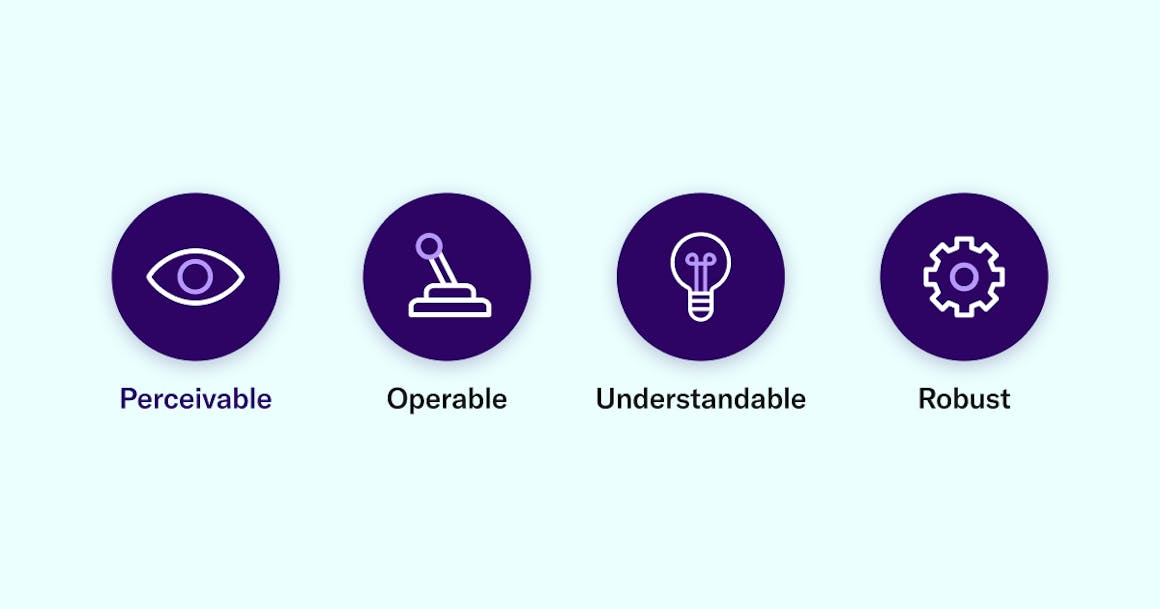Tube Rank: Your Guide to Video Success
Discover tips and insights for optimizing your video presence.
Breaking Down Barriers: The Fun Side of Web Accessibility
Unlock the joy of web accessibility! Join us as we explore fun, creative ways to break barriers and make the web inclusive for all.
Understanding Web Accessibility: What You Need to Know
Web accessibility refers to the practice of creating websites and online content that can be easily accessed and navigated by everyone, including individuals with disabilities. It involves implementing design and development principles that ensure all users, regardless of their physical or cognitive abilities, can perceive, understand, navigate, and interact with web content. The importance of web accessibility is underscored by initiatives like the Web Content Accessibility Guidelines (WCAG), which provide a comprehensive framework for making digital content inclusive. Adopting these practices not only expands your audience reach but also enhances user experience and fosters social inclusion.
To achieve optimal web accessibility, consider the following key elements:
- Text Alternatives: Provide text descriptions for non-text content like images and videos.
- Keyboard Navigation: Ensure that all interactive elements can be accessed using a keyboard.
- Readable Content: Use plain language and appropriate contrast to enhance readability.
- Responsive Design: Create layouts that adapt to various devices and screen sizes.
- Testing with Users: Involve people with disabilities in your testing processes to gather valuable feedback.

Top 10 Fun Ways to Make Your Website More Accessible
Making your website accessible is not just about compliance; it's about creating an inclusive online experience for everyone. Here are 10 fun ways to enhance your website's accessibility:
- Use Color Contrast Creatively: Ensure text stands out by using complementary colors. Tools like contrast checkers can aid in this.
- Add Alt Text to Images: Not only does this help visually impaired users, but it also enriches the context for all visitors.
- Incorporate Video Subtitles: Elevate engagement by providing subtitles or captions. This helps users with hearing impairments and those in sound-off environments.
- Implement Keyboard Navigation: Simplifying navigation for keyboard users can also enhance the experience for others.
- Use ARIA Landmark Roles: These semantic tags assist screen readers in understanding page structure.
- Create Descriptive Link Text: Avoid vague phrases. Instead, use clear wording that describes the link's destination.
- Ensure Responsive Design: A user-friendly mobile experience improves access for everyone.
- Test using Accessibility Tools: Make use of various tools to simulate different disabilities and check how your site performs.
- Solicit Feedback: Engaging with users will provide valuable insights into their accessibility experiences.
- Continuous Learning: Keep abreast of the latest accessibility trends and best practices by attending webinars or workshops.
How Inclusive Design Can Enhance User Experience for Everyone
Inclusive design is a philosophy that fosters accessibility and adaptability in products and services, ensuring that everyone, regardless of their abilities or circumstances, has a positive user experience. By implementing inclusive design principles, designers can create interfaces that cater to diverse user needs. For instance, using color contrast tools can help improve visibility for users with visual impairments, while intuitive navigation designs assist those with cognitive challenges. When every user is considered, it enhances overall usability and offers a more satisfying interaction for everyone.
Moreover, adopting an inclusive design approach not only benefits users with disabilities but also enriches the experience for all users. When products are designed with a broad audience in mind, it leads to innovations that can simplify usage for everyone. For example, features such as touch controls, voice commands, and easy-to-understand icons serve a range of users, from the elderly to tech-savvy younger generations. Consequently, an inclusive design strategy is a win-win—it elevates user experience and promotes greater engagement with products across various demographics.